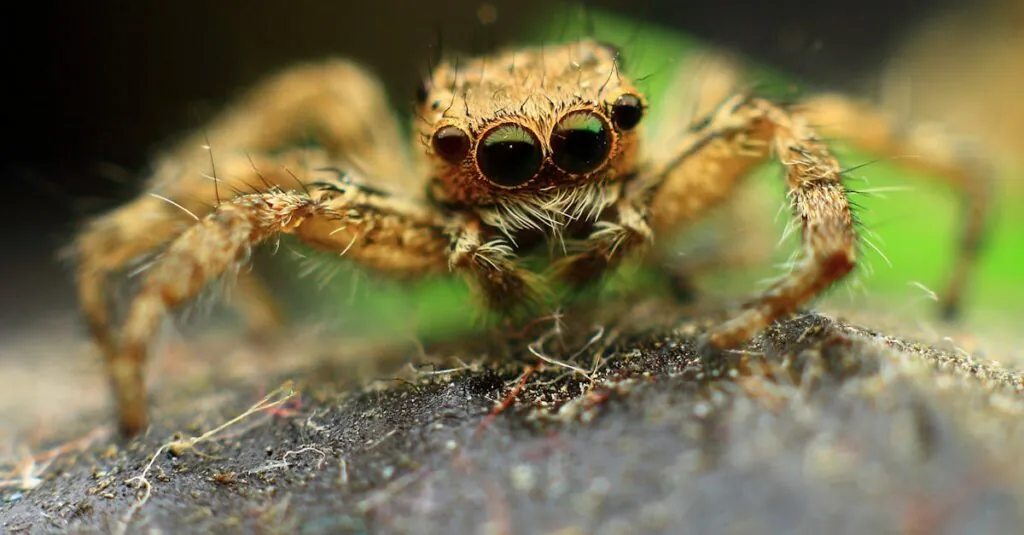Table of Contents
ToggleSpiders might be nature’s tiny pest control agents, but when they invade homes, they can turn into unwelcome roommates. Imagine settling down for a cozy night in, only to spot a hairy eight-legged critter making a beeline for your popcorn. Yikes! While they may help keep other pests at bay, most folks prefer their homes spider-free.
Understanding Spiders and Their Habitats
Spiders contribute to ecosystems by controlling insect populations. Many prefer to avoid encounters with these creatures in their homes.
Common Spider Species
Numerous spider species inhabit various environments. The common house spider thrives indoors, often found in corners and hidden spaces. Garden spiders dwell outdoors, easily recognizable by their large webs. Black widows are notorious for their venomous bite, typically residing in sheltered, dark areas. Brown recluse spiders prefer secluded spots, often within cluttered spaces. Each species plays a distinct role in its ecosystem, balancing pest control efforts while fostering an uneasy presence in human spaces.
Preferred Environments
Spiders adapt well to diverse habitats. They favor warm, sheltered locations, often seeking refuge indoors during cooler months. Basements, attics, and crawl spaces provide ideal nesting sites. Outdoor environments include gardens, forests, and fields where prey availability is high. Moist areas attract many species, contributing to their thriving populations. Spiders often build webs in locations that provide protection from predators, ensuring their survival while also encroaching on human spaces.
Why Spiders Become Pests
Spiders can turn into household pests for various reasons. Their presence often disrupts comfort and can lead to health concerns, especially in specific situations.
Impact on Homes and Health
Spiders contribute to unsettling environments when they invade homes. Many people report feelings of anxiety or fear upon noticing these creatures. Certain species, like black widows and brown recluse spiders, pose potential health risks through their bites. Such bites can lead to serious medical issues, requiring attention. Additionally, webs created by spiders can accumulate dust and allergens, aggravating respiratory problems for some individuals.
Reasons for Infestation
Warm and sheltered settings attract spiders, particularly during cooler months. Cracks in walls, gaps in windows, and cluttered areas provide ideal hiding spots. They seek food sources like insects, which are commonly found indoors. Excess moisture from leaks or damp areas can also lure spiders inside. Furthermore, overgrown vegetation near homes creates a bridge that allows spiders to enter living spaces. Addressing these factors can help mitigate spider infestations.
Effective Spiders Pest Control Methods
Spiders can create discomfort in homes, prompting the need for effective pest control methods. Implementing specific strategies can help reduce their presence while maintaining ecological balance.
Prevention Techniques
Sealing gaps and cracks in walls prevents spiders from entering homes. Installing screens on windows and doors helps block their access. Reducing clutter minimizes hiding spots for spiders, making indoor environments less appealing. Keeping yards tidy by trimming vegetation and removing debris also deters spiders. Regularly cleaning areas prone to web-building, like corners and basements, further discourages spider habitation. Moisture control, such as fixing leaks and ensuring proper drainage, decreases attractive conditions.
Traps and Baits
Using sticky traps captures wandering spiders effectively. Placing them in high-traffic areas can monitor spider activity. Commercial baits, often containing insecticides, attract and kill spiders when consumed. Positioning baits near entry points increases their efficiency. Choosing traps and baits designed for specific spider species enhances effectiveness. Employing these methods offers a targeted approach for managing spider populations without overly relying on chemical repellents.
Biological Control Options
Biological control options provide effective methods to manage spider populations while minimizing ecological disruption.
Natural Predators
Natural predators play a crucial role in controlling spider numbers. Birds, small mammals, and other insects such as wasps and predatory beetles target spiders in various ecosystems. Introducing these predators in outdoor environments can help maintain balanced spider populations. For instance, attracting birds with feeders or nesting boxes encourages them to hunt spiders actively. Ensuring a balanced ecosystem aids in keeping spider presence in check without relying on chemical treatments.
Eco-Friendly Solutions
Eco-friendly solutions focus on using non-toxic methods for spider management. Essential oils like peppermint, tea tree, and citrus act as natural repellents against spiders. Spraying a mixture of water and these oils around entry points can deter spiders from entering homes. Additionally, diatomaceous earth serves as an effective barrier. This natural powder can be sprinkled in areas prone to spider activity, causing dehydration to any spider that crosses it. Utilizing these solutions promotes a healthier living environment while addressing spider concerns.
Chemical Control Measures
Chemical control measures offer effective solutions for managing spider populations. These methods often include insecticides and pesticides that specifically target spiders.
Insecticides and Pesticides
Insecticides designed for spider control contain active ingredients that disrupt the insects’ nervous systems. Examples of effective chemicals include pyrethroids and carbamates, which cause paralysis in spiders upon contact. Manufacturers often label their products for spider use, making it easier for homeowners to select appropriate options. Conventional sprays and residual insecticides provide immediate results, especially in areas where spiders frequently inhabit. Always follow the application guidelines to maximize effectiveness and ensure safety during use.
Safety Precautions
Safety precautions play a crucial role in the application of chemical control measures. Using protective gear, such as gloves and masks, reduces exposure to harmful chemicals. It’s important to keep children and pets away from treated areas until the insecticide is dry. Ensuring proper ventilation during application helps disperse any harmful fumes. Following manufacturer instructions promotes safe and effective usage while minimizing risks. Always store any unused products securely, out of reach of children and pets, to prevent accidental ingestion or exposure.
Managing spider populations requires a balanced approach that respects their ecological role while addressing homeowners’ concerns. By implementing preventive measures and maintaining a clean environment, individuals can significantly reduce the chances of spider invasions. Utilizing traps and eco-friendly solutions can help keep these creatures at bay without harming the environment.
For those who prefer more immediate results, targeted chemical control methods can effectively manage spider numbers when applied with caution. Ultimately, understanding the dual nature of spiders allows for informed decisions that protect both comfort and ecological balance. A proactive strategy ensures a spider-free home while appreciating their contribution to pest control outdoors.







